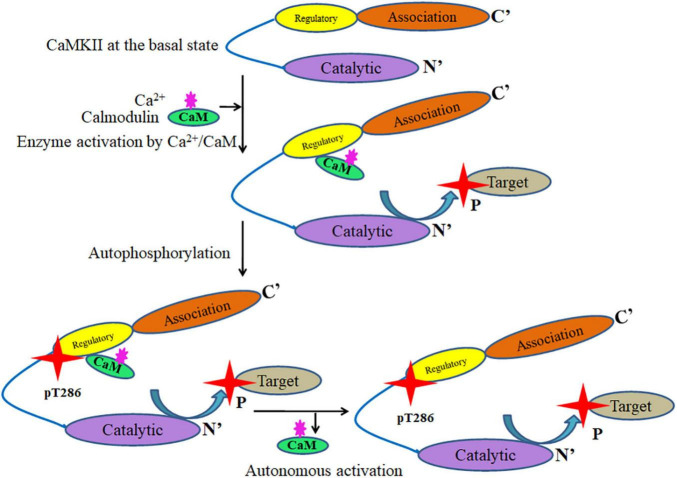FIGURE 2.
Basic activation mechanism of CaMKII that leads to autonomy resulting from Thr286 autophosphorylation. Under basal conditions, the enzyme is present in an autoinhibited state with the regulatory segment bound to the catalytic domain. This can be activated by the binding of Ca2+/CaM to the regulatory domain which releases the regulatory segment from the catalytic domain. The activated enzyme can autophosphorylate at Thr286 or any other substrates. The autonomous CaMKII thus generated can be catalytically active even in the absence of Ca2+/CaM.

